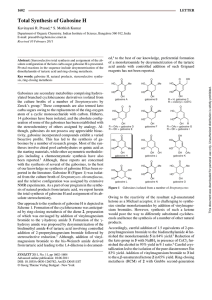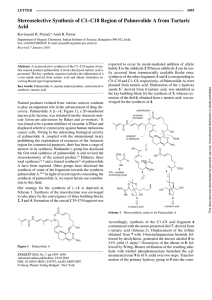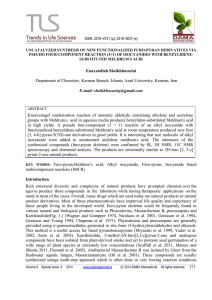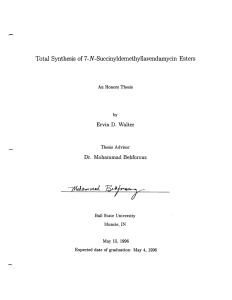ABSTRACT
advertisement
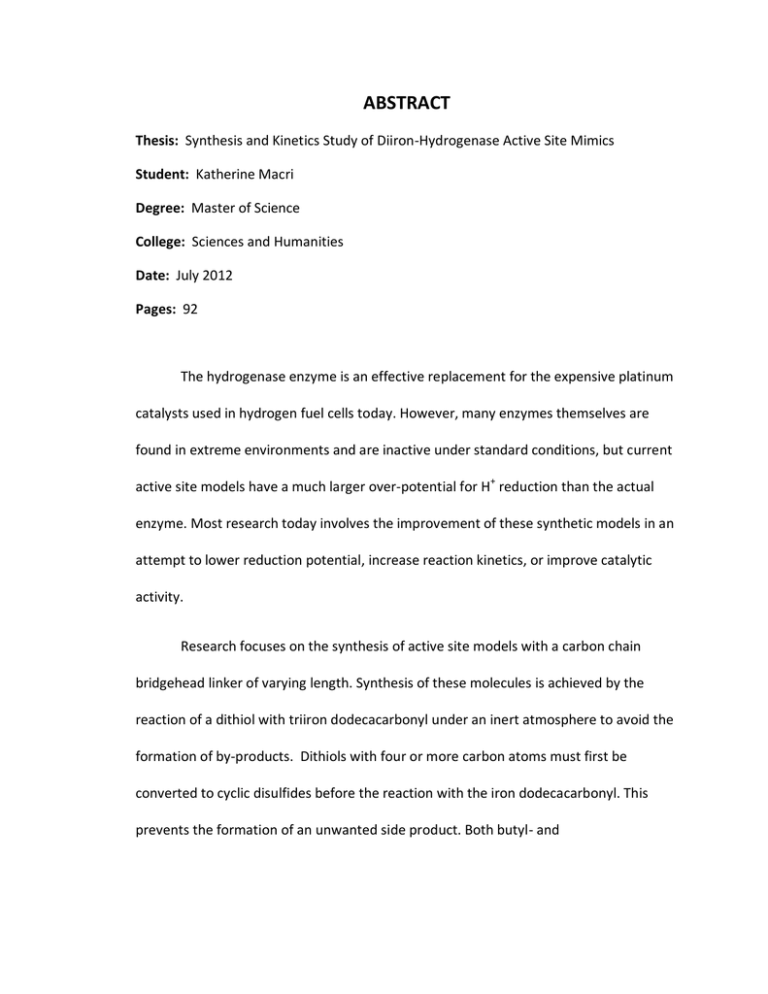
ABSTRACT Thesis: Synthesis and Kinetics Study of Diiron-Hydrogenase Active Site Mimics Student: Katherine Macri Degree: Master of Science College: Sciences and Humanities Date: July 2012 Pages: 92 The hydrogenase enzyme is an effective replacement for the expensive platinum catalysts used in hydrogen fuel cells today. However, many enzymes themselves are found in extreme environments and are inactive under standard conditions, but current active site models have a much larger over-potential for H+ reduction than the actual enzyme. Most research today involves the improvement of these synthetic models in an attempt to lower reduction potential, increase reaction kinetics, or improve catalytic activity. Research focuses on the synthesis of active site models with a carbon chain bridgehead linker of varying length. Synthesis of these molecules is achieved by the reaction of a dithiol with triiron dodecacarbonyl under an inert atmosphere to avoid the formation of by-products. Dithiols with four or more carbon atoms must first be converted to cyclic disulfides before the reaction with the iron dodecacarbonyl. This prevents the formation of an unwanted side product. Both butyl- and pentyldithiolatohexacarbonyldiiron model complexes have been characterized by IR, NMR, and X-ray spectroscopy. Active site models can also feature two unlinked sulfur atoms. These models have two conformational isomers that depend on the spatial location of the R-group bonded to each sulfur atom. This research also focuses on the synthesis of unlinked active site models with a variety of R-groups, and a temperature controlled NMR study of the isomeration reaction to determine the reaction rate.






